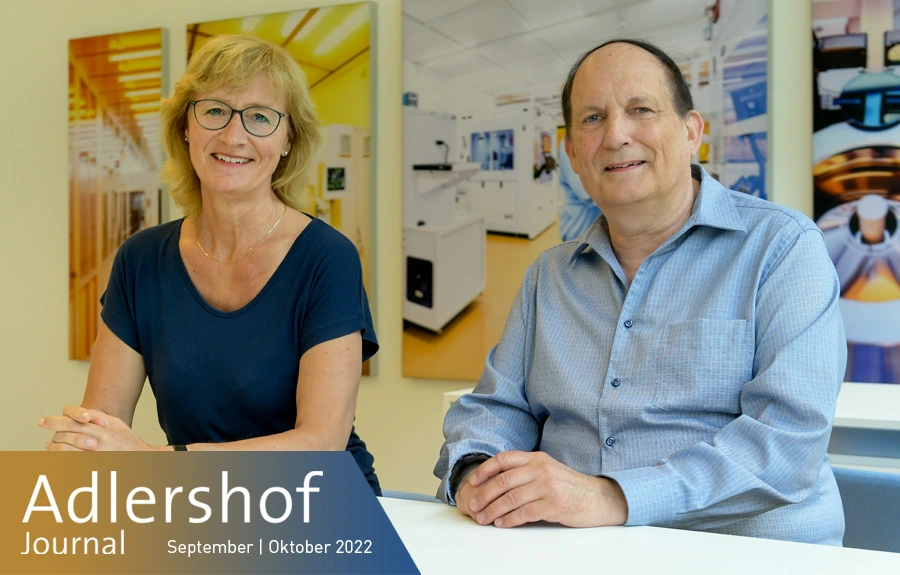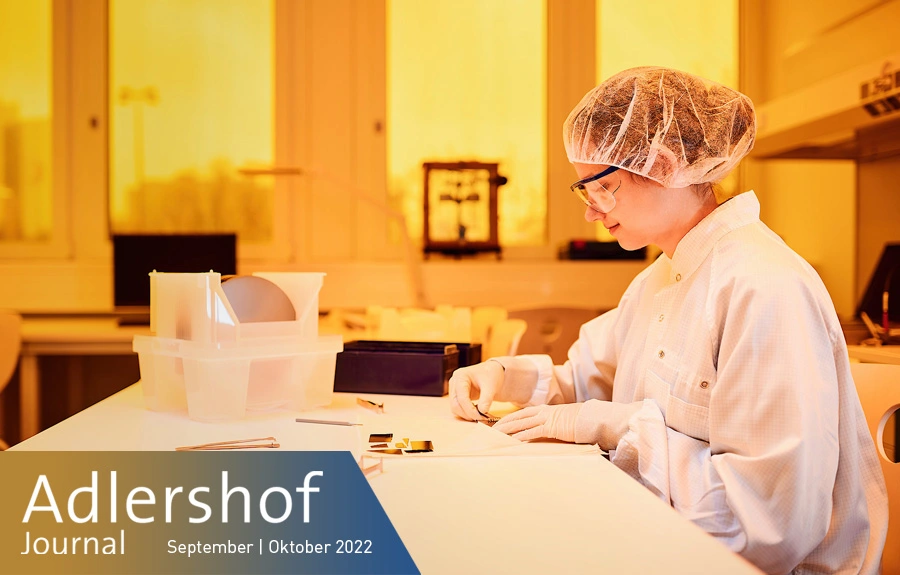“A wonderful landscape for apprentices”
ANH Berlin is taking care of the highly sought-after new generation of non-academic staff
The skilled labour shortage is currently a huge issue in Germany. The microelectronics sector develops and produces semiconductor chips for a wide range of applications – from computers to airbag sensors – and is particularly affected. The chips are typically manufactured by etching holes into crystal discs, putting in contacts, and coating surfaces in clean rooms. Microelectronics is an industry providing skilled workers with attractive jobs and great prospects.
“A university degree is not necessary for success in this exciting field,” says Uta Voigt, coordinator of ANH Berlin, a training network for high-technology that is based at Ferdinand Braun Institute, a Leibniz institute for high-frequency technology in Adlershof. However, the current trend is that career choices tend to go in an academic direction. The young generation is also generally smaller for demographic reasons. Lastly, many skilled workers are now retiring. “While pupils would apply for a position in a company in the past, now the companies must apply to get young people.”
There is an increasing competition for young talent,” says Günther Tränkle, director of FBH since 1996 and professor for microwave technology and optoelectronics at Technische Universität Berlin. The physicist cites the great importance of the dual-education apprenticeship in microtechnology for the Leibniz Institute, which was founded 30 years ago. “We were there from the beginning, when the scheme was first launched in 1998.” Small industrial companies could not provide the complex apprenticeship on their own. Research facilities could. Creating a network was therefore a good idea. “It was my team’s idea and I supported it very much,” says the native Swabian.
The ANH Berlin network was founded at FBH in 2007. Today, four employees are in charge of operations, including securing funds. This comes mainly through subsidies from the federal and Berlin’s state government, European Union projects, and Berlin’s chamber of industry and commerce. ANH Berlin brings together companies, research facilities, vocational schools, universities, so-called social partners, and other organisations with a wide reach. In 2019, ANH created proANH e.V., an association supporting its 23 members with recruiting apprentices and with basic and advanced training. This is done by hosting various events, where microtechnology as a profession is presented to young people, parents, teachers, and also career counsellors of the employment agency.
“We provide information on high-quality dual-apprenticeship programmes and excellent opportunities for advanced training,” says Voigt. The researcher with a degree in Northern European studies, who has been working in vocational training for some time, finds this high-tech sector incredibly important. She sees the anchoring at FBH with its world-class research as a great asset. FBH does not only carry out in-depth research but also training. “Our director, Professor Tränkle, has a special awareness for the skilled labour and young talent issue and we have excellent conditions to do our work, says Voigt, gladly. The FBH with its laboratories and clean rooms, its apprentices and scientists, is “a wonderful landscape” to give young people some orientation for a career in microtechnology. Moreover, the Adlershof site with its many innovative companies and research facilities also offers great opportunities for promoting science careers.
Students can use the ANH to apply for internships as well as courses at MicroLAB, a joint school laboratory of FBH and the Lise-Meitner-Berufsschule, a vocational school in Gropiusstadt. Teachers and their classes can register for guided tours that offer insights into the everyday work life at FBH. Those interested can also look at cleanrooms and laboratories at special events such as the Long Night of the Sciences. During the coronavirus pandemic, ANH also developed digital tours of the institute. “It’s going quite well. The reach is good but it’s still not the same as having the people on site,” says Voigt.
Dr. Paul Janositz for Adlershof Journal


